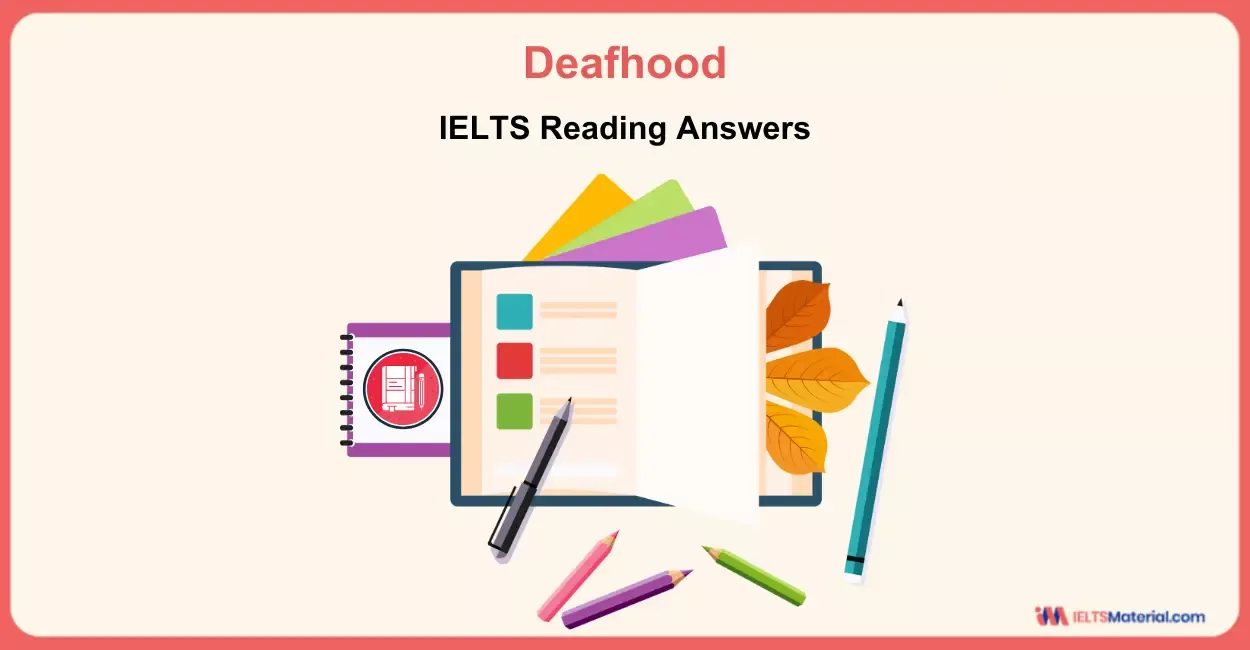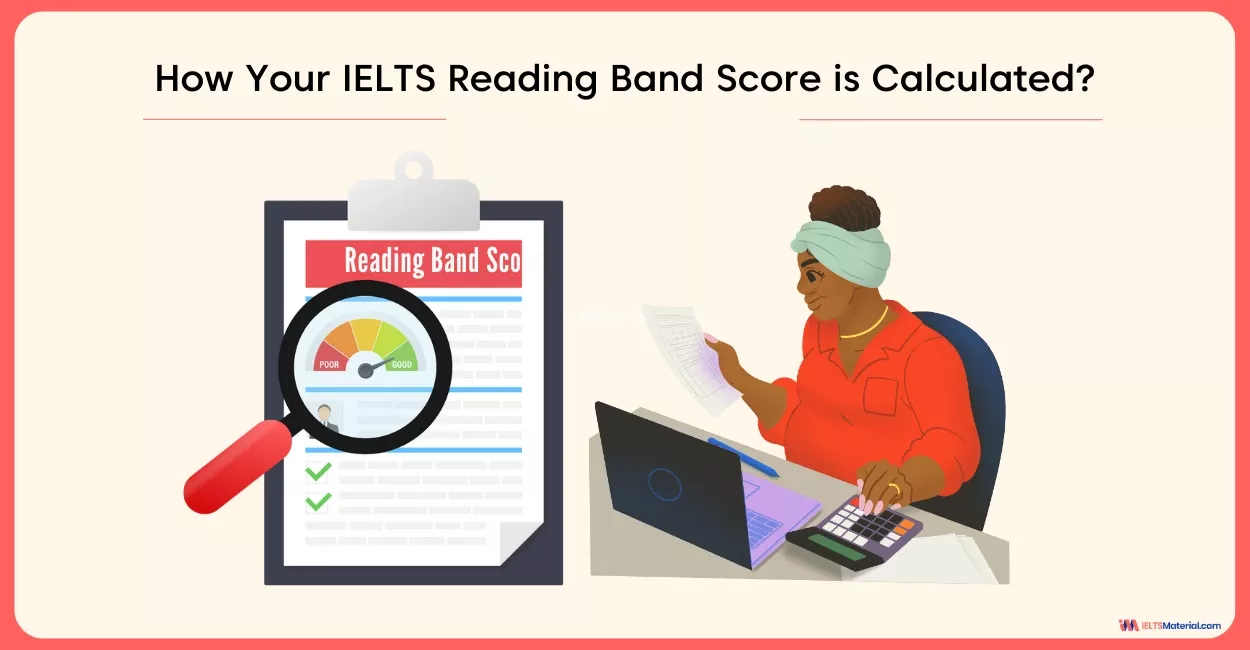Phrenology: Interpreting the Mind – IELTS Reading Answers
14 min read
Updated On
-
Copy link
Take the Phrenology: Interpreting the Mind IELTS Reading Answers test and find the location and explanations. Find more IELTS Academic reading passages and question types to perfect your skills and get a band score 9.
Table of Contents
- Reading Passage for Phrenology: Interpreting the Mind Reading Answers
- Questions for Phrenology: Interpreting the Mind Reading Answers
- Phrenology: Interpreting the Mind Reading Answers with Location and Explanation
- Tips to Solve the Question Types in Phrenology: Interpreting the Mind IELTS Reading Answers

Limited-Time Offer : Access a FREE 10-Day IELTS Study Plan!
One of the biggest hurdles in the IELTS Reading test is dealing with the wide variety of question types, and each one tests a different reading skill. From True/False/Not Given questions that test your ability to recognize factual accuracy, to Matching Headings that assess your understanding of paragraph structure, every format demands a different strategy. Therefore, practicing reading passages like ‘Phrenology: Interpreting the Mind IELTS Reading Answers’ is important to acquaint yourself with different IELTS Reading question types with examples.
The Academic Reading passage, Phrenology: Interpreting the Mind, is an IELTS reading passage that consists of 14 questions. They are divided into sets, and you need to complete these specific tasks within a limited time.
So, learn to solve the IELTS Reading practice test, Phrenology: Interpreting the Mind Reading Answers, with explanations, locations for the answers, and tips on how to approach IELTS Reading question types. Let’s get started!
Interested in participating in FREE webinars to learn and interact with IELTS experts?
Book one of the limited seats and keep prepping!
Reading Passage for Phrenology: Interpreting the Mind Reading Answers
Use effective reading techniques to go through the Phrenology: Interpreting the Mind passage below to improve your reading skills and achieve a high IELTS band score.
You should spend about 20 minutes on Questions 1-14, which are based on the Reading Passage below.
Phrenology: Interpreting the Mind – IELTS Reading Answers
Phrenology is the doctrine that proposes that psychological traits of personality, intellect, temperament, and character are ascertainable from analysis of the protrusions and depressions in the skull. It was an idea created by Franz Joseph Gall in 1796. Gall referred to his new idea in English as cranioscopy. It was only later that Johanne Spurzheim, one of Gall’s students, labeled the idea phrenology after Gall’s death. Gall’s idea was spurred when he noticed that university classmates who could memorize great amounts of information with relative ease seemed to have prominent eyes and large foreheads. He speculated that other internal qualities, besides memory, might be indicated by an external feature also. Gall theorized that traits were located in particular regions of the brain. Enlargements or expressions in the brain in particular areas meant a greater than normal or less than normal quantity of the given trait. It was assumed that the external contour of the skull accurately reflected the external contour of the brain where traits were localized.
Carl Cooter, another advocate of phrenology asserted that there were five major parts to phrenology theory. The first was simply that the brain was the organ of the mind. The second was that the brain was not a homogeneous unity, but a compilation of mental organs with specific functions. The third was that the organs were topographically localized. The fourth was that the relative size of any one of the organs could be taken as a measure of that organ’s power over the person’s behavior. The fifth and final part of Cooter’s theory was that external craniological features could be used to diagnose the internal state of the mental faculties. All of these parts were based on observations Cooter made.
Sebastian Leibl, a student of Cooter’s, theorized that there could be anywhere from 27 to 38 regions on the skull indicative of the organs of the brain, each of which stood for a different personality characteristic. Leibl further theorized that the different regions of the brain would grow or shrink with usage, just as muscles will grow larger when exercised. If a certain part of the brain grew from increased use, the skull covering that part of the brain would bulge out to make room for the expanded brain tissue. With these assumptions, the bumps on one’s skull could be felt and the abilities and personality traits of a person could be assessed.
Spurzheim put a more metaphysical and philosophical spin on Gall’s concept when he named it phrenology, meaning “science of the mind”. To Spurzheim phrenology was the science that could tell people what they are and why exactly they are who they are. Spurzheim wrote that the premise of phrenology was to use the methods to identify individuals who stood out at both poles of society: those with a propensity for making important social contributions and those with a greater than the normal tendency for evil. The former was to be encouraged, nurtured, and developed in order to maximize their potential for good. The latter needed to be curbed and segregated to protect society from their predisposition to be harmful to others.
Phrenology has met up with a good deal of criticism since it was proposed, but over time it has also been credited for certain things. John Fancher, a critic of phrenology, states that it was a curious mixture, combining some keen observations and insights with an inappropriate scientific procedure. Most criticism is aimed at the poor methods used by phrenologists and the tangent from the standard scientific procedure in investigating.
Pierre Flourens was also appalled by the shoddy methods of phrenologists and was determined to study the functions of the brain strictly by experiment. The specific technique that Flourens used was ablation, the surgical removal of certain small parts of the brain. Flourens was a very skilled surgeon and used ablation to cleanly excise certain slices from the brain. He ablated precisely determined portions of bird, rabbit, and dog brains. Flourens then observed the behavior of his subject. Since, for obvious ethical reasons, he was only able to use animals, he could not test uniquely human faculties. He never tested or measured any behavior until he nursed his subjects back to health after their operations. Flourens’s subjects did show a lowering of all functions but not just one function as Gall’s theory would have predicted. Gall asserted that he wiped out many organs all at once when he ablated part of the brain. This explained the general lowering of all functions in many of his subjects. Despite attacks from Flourens and others, phrenology held its appeal to scientists in Europe who would bring the idea across to America where it would flourish.
Questions for Phrenology: Interpreting the Mind Reading Answers
There are two types of IELTS Reading question types in Phrenology: Interpreting the Mind Reading Answers. They are:
- IELTS Reading Matching Features (Q. 1-8)
- IELTS Reading True False Not Given (Q. 9-14)
Questions 1 – 8
Answer questions 1 – 8 below by writing the initials of the phrenology scientist to which the questions refer in boxes 1- 8 on your answer sheet.
NB In one question you must write the initials of TWO phrenology scientists.
1 Which phrenology scientist did not use the term phrenology?
2 Which phrenology scientist theorized that you could identify people’s morality using phrenology?
3 Which phrenology scientist theorized that the size of certain parts of human brains would increase if they were used a lot?
4 Which TWO phrenology scientists did not agree with the way phrenologists came to their conclusions?
5 Which phrenology scientist theorized that the size of a certain part of the brain corresponds to that part of the brain’s influence over a person’s actions?
6 Which phrenology scientist theorized that the human brain was a collection of cerebral organs?
7 Which phrenology scientist was an expert at performing operations?
8 Which phrenology scientist proposed theories based on his observations of colleagues?
The Phrenology Scientists
FG Franz Joseph Gall
CC Carl Cooter
SL Sebastian Leibl
JS Johanne Spurzheim
JF John Fancher
PF Pierre Flourens
Questions 9 – 14
Read the passage Phrenology – Interpreting the Mind again and look at the statements below. In boxes 9 – 14 on your answer sheet write:
TRUE if the statement is true
FALSE if the statement is false
NOT GIVEN if the information is not given in the text
9 Flourens conducted brain experiments on human patients.
10 The theories of phrenology thrived in America.
11 Gall theorized that phrenology could only indicate memory ability.
12 Flourens worked with Fancher to investigate phrenology using standard scientific experiments.
13 Gall also conducted experiments on live subjects.
14 Spurzheim’s theories were used by governments as a rationale to segregate certain undesirable parts of society.
Phrenology: Interpreting the Mind Reading Answers with Location and Explanation
Match your answers for the IELTS Academic Reading, Phrenology: Interpreting the Mind Reading Answers with the answer key. The passage includes each answer's location and explanations for convenient practice.
1 Answer: FG
Question type: Matching Features
Answer location: Paragraph 1 , line 3 – line 5
Answer explanation: The mentioned lines from Paragraph 1 states that “It was an idea created by Franz Joseph Gall in 1796. Gall referred to his new idea in English as cranioscopy. It was only later that Johanne Spurzheim, one of Gall’s students, labeled the idea phrenology after Gall’s death.” Therefore, Gall did not use the term phrenology as it was after his death that this term was phrased.Hence the answer is FG.
2 Answer: JS
Question type: Matching Features
Answer location: Paragraph 4, line 3 – line 6
Answer explanation: The specified lines from Paragraph 4 says that “Spurzheim wrote that the premise of phrenology was to use the methods to identify individuals who stood out at both poles of society: those with a propensity for making important social contributions and those with a greater than the normal tendency for evil.” So according to Johanne Spurzheim, one could identify people’s morality using phrenology and differentiate between those who could make important social contributions and those who were inclined towards evil. Hence the answer is JS.
3 Answer: SL
Question type: Matching Features
Answer location: Paragraph 3, line 3 – line 4
Answer explanation: The following line from Paragraph 3 says that “Leibl further theorized that the different regions of the brain would grow or shrink with usage, just as muscles will grow larger when exercised.” This line hints that Sebastian Leibl theorized that the size of certain parts of human brains would increase if they were used a lot. Hence, the answer is SL.
4 Answer: JF & PF
Question type: Matching Features
Answer location: Paragraph 5, line 2 – line 3 & Paragraph 6, line 1 – line 2
Answer explanation: In the fifth paragraph, it is given that “John Fancher, a critic of phrenology, states that it was a curious mixture, combining some keen observations and insights with an inappropriate scientific procedure.” Further, in the following paragraph, it is mentioned that “Pierre Flourens was also appalled by the shoddy methods of phrenologists and was determined to study the functions of the brain strictly by experiment.” Both these scientists did not agree with the unscientific way phrenologists came to their conclusions. Hence the answer is JF and PF.
5 Answer: CC
Question type: Matching Features
Answer location: Paragraph 2, line 4 – line 5
Answer explanation: The quoted lines from Paragraph 2 points out that Carl Cooter, another advocate of phrenology asserted that the fourth part of the brain “was that the relative size of any one of the organs could be taken as a measure of that organ’s power over the person’s behavior.” It means that the size of a certain part of the brain (fourth) corresponds to that part of the brain’s influence over a person’s actions/behavior. Hence the answer is CC.
6 Answer: CC
Question type: Matching Features
Answer location: Paragraph 2, line 1 – line 3
Answer explanation: The following line from Paragraph 2 says that “Carl Cooter, another advocate of phrenology asserted that …. The second was that the brain was not a homogeneous unity, but a compilation of mental organs with specific functions.” As Cooter pointed out, our brain is a collection of cerebral organs, the answer is CC.
7 Answer: PF
Question type: Matching Features
Answer location: Paragraph 6, line 3 – line 4
Answer explanation: The mentioned lines from Paragraph 6 says that “Flourens was a very skilled surgeon and used ablation to cleanly excise certain slices from the brain.” As skilled surgeon means to an expert at performing operations, the answer is PF.
8 Answer: FG
Question type: Matching Features
Answer location: Paragraph 1, line 5 – line 9
Answer explanation: The following line from the first paragraph refers to the statement that “Gall’s idea was spurred when he noticed that university classmates who could memorize great amounts of information with relative ease seemed to have prominent eyes and large foreheads. …Gall theorized that traits were located in particular regions of the brain.” It means that he proposed theories based on his observations of colleagues or university classmates. Hence the answer is FG.
9 Answer: FALSE
Question type: True/False/Not Given
Answer location: Paragraph 6, line 3 – line 5
Answer explanation: The following line from Paragraph B says that “Flourens was a very skilled surgeon and used ablation to cleanly excise certain slices from the brain. He ablated precisely determined portions of bird, rabbit, and dog brains.” This proves that Flourens did not perform brain experiments on human patients but surgically removed required tissues (ablated) from birds, rabbits and dogs and experimented. Hence the answer is False.
10 Answer: TRUE
Question type: True/False/Not Given
Answer location: Paragraph 6, line 11 – line 13
Answer explanation: The concluding line from Paragraph 6 states that “Despite attacks from Flourens and others, phrenology held its appeal to scientists in Europe who would bring the idea across to America where it would flourish.” Therefore, in spite of criticism, phrenology flourished in America. Hence the answer is True.
11 Answer: FALSE
Question type: True/False/Not Given
Answer location: Paragraph 1, line 7 – line 9
Answer explanation: The following line from Paragraph 1 says that “He speculated that other internal qualities, besides memory, might be indicated by an external feature also. Gall theorized that traits were located in particular regions of the brain.” It means that Gall also theorized that internal qualities excluding memory can also be indicated by phrenology.Hence the answer is False.
12 Answer: NOT GIVEN
Question type: True/False/Not Given
Answer location: N.A.
Answer explanation: Although the last two paragraphs of this passage points out that Flourens and Fancher shared the same critical viewpoint about phrenology, there is no reference that they worked together. Hence the answer is NOT GIVEN.
13 Answer: TRUE
Question type: True/False/Not Given
Answer location: Paragraph 1, line 5- line 7 & Paragraph 6, line 9 – line 11
Answer explanation: In the first paragraph, it is stated that “Gall’s idea was spurred when he noticed that university classmates who could memorize great amounts of information with relative ease seemed to have prominent eyes and large foreheads.” Moreover, the mentioned lines from Paragraph 6 says that “Gall asserted that he wiped out many organs all at once when he ablated part of the brain. This explained the general lowering of all functions in many of his subjects.” The phrases ‘noticed that university classmates’ and ‘his subjects’ points out that he worked with experiments on live subjects. Hence the answer is True.
14 Answer: NOT GIVEN
Question type: True/False/Not Given
Answer location: N.A.
Answer explanation: From the passage, we come to know that Johanne Spurzheim had first used the term ‘phrenology’ and what he found about it. But since there is no mention of his work being used by the government, the answer is NOT GIVEN.
Want to know more about how to solve the questions?
Tips to Solve the Question Types in Phrenology: Interpreting the Mind IELTS Reading Answers
Since now you know the answers to the Reading Answers of Phrenology: Interpreting the Mind with explanation, let us check out some quick IELTS exam preparation tips for band score 8+ and to answer the two types of questions in the Phrenology: Interpreting the Mind Reading Answers.
Tips to Answer Matching Features Questions
-
Skim the List First: Before reading the text, glance through the list of features (e.g., names of scientists). Familiarize yourself with them, so your brain is alert when you come across them in the passage.
-
Read the Statements Carefully: Understand exactly what each question is asking. Identify keywords (e.g., ‘did not agree’, ‘used phrenology to…’) and keep them in mind.
-
Scan for Names/Initials: As you read the passage, scan for the initials/names of each scientist. These are usually bolded or capitalized in the test and act as reference points.
-
Read Around the Name: Don’t just read the sentence where the name appears. Read a few lines before and after getting the full context of the scientist’s view or theory.
-
Paraphrasing Awareness: The statements in the question will almost never match the passage word-for-word. IELTS will paraphrase ideas, so train yourself to recognize synonyms and implied meanings (e.g., ‘a skilled surgeon’ = ‘an expert at operations’).
-
Beware of Similar Ideas Assigned to Multiple People: Sometimes, more than one scientist may have a similar viewpoint. Be sure you find the correct match based on exact wording and ideas. Sometimes two answers may apply to one question (as seen in Q4 of this test).
-
Avoid Assumptions: Don’t rely on your general knowledge or logic. Stick strictly to what the text explicitly or implicitly states.
Tips to Answer True / False / Not Given Questions:
-
Understand the Difference: While TRUE means the statement exactly matches what the passage says, FALSE is the statement contradicts the passage. Similarly, NOT GIVEN means the passage doesn’t say anything about it; neither confirms nor contradicts.
-
Use a Line-by-Line Approach: Find the exact location in the text that the question refers to. Read the relevant lines slowly and carefully, comparing the meaning.
-
Look for Synonyms and Paraphrasing: IELTS rarely repeats phrases. If the question says ‘performed brain experiments on humans’ and the text says ‘conducted surgeries on dogs’, that’s a clear FALSE.
-
Beware of Partial Matches: If only part of the statement is found in the passage and the other part is unknown, it’s NOT GIVEN. E.g., if it says ‘Gall's theories were used by governments’ and nothing in the text talks about government involvement, it's NOT GIVEN, even if Gall’s theories are discussed.
-
Pay Attention to Details (Time, Place, Quantity): Details like numbers, locations, and time frames are often used to trap you. If the question includes an extra or incorrect detail (e.g., says "Flourens experimented on humans" but the passage says "animals"), it’s clearly FALSE.
-
Don’t Overthink: For ‘NOT GIVEN’, if you search the entire passage and still can’t find any clue about the statement, don’t panic. That means it’s not there, and the correct answer is NOT GIVEN.
-
Use Elimination: If unsure between TRUE and NOT GIVEN, try to find an exact match. If it’s not explicitly supported, then it’s NOT GIVEN. If you find a contradiction, mark it as FALSE.
To conclude, practising more IELTS Academic Reading tests, especially IELTS reading actual tests like Phrenology: Interpreting the Mind with detailed answer explanations, can be incredibly beneficial for improving your reading skills and boosting your test performance.
Useful Links:
- What Does the Consumer Think?- IELTS Reading Answers
- Psychological Value of Space - IELTS Reading Answers
- Space Travel And Health- IELTS Reading Answers
- How to Spot a Liar Reading Answers
- The History of Papermaking in the United Kingdom Reading Answers
- IELTS Reading: Previous Year Actual Tests with Answers PDF 2025
Practice IELTS Reading based on question types

Start Preparing for IELTS: Get Your 10-Day Study Plan Today!
Explore other Reading Practice Tests

Nehasri Ravishenbagam

Nehasri Ravishenbagam

Kasturika Samanta

Kasturika Samanta
Recent Articles

Nehasri Ravishenbagam

Haniya Yashfeen

Haniya Yashfeen

Haniya Yashfeen




Post your Comments